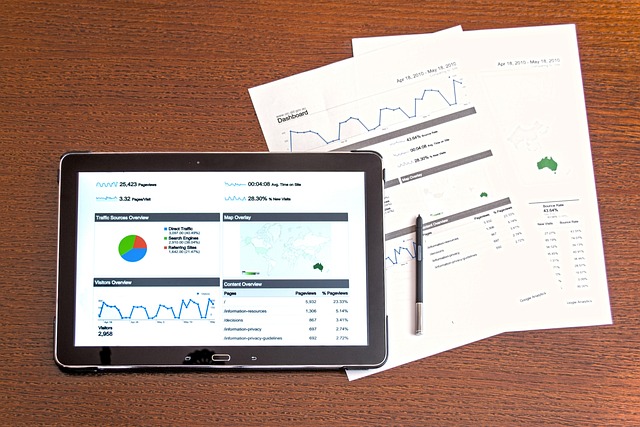For any investor, selecting the best online share trading platform is a crucial choice. Choosing the platform that is ideal for your requirements and financial goals might be difficult given the range of alternatives available today. This article offers a detailed process for choosing the best online share trading platforms according to important variables you should take into account.
1. Determine Your Investment Goals and Needs
Before evaluating different trading platforms, first reflect on your specific investment goals and needs. Clarifying these upfront establishes the key criteria to look for in a platform.
Consider what assets you need to invest in. Is it stocks, ETFs, mutual funds? Or do you also need options, futures, or forex?
Think through your investment style and strategies. Will you be an active trader seeking short-term gains? Or focus on long-term, buy-and-hold positions? If day trading, you need capabilities to support high-volume trades.
2. Key questions to ask yourself:
● Which assets—stocks, ETFs, options, futures, or forex—do you wish to trade?
● What markets do you want to access?
● What is your investment style – active trading, long-term investing, day trading?
● What account types do you need?
● Do you require access to research, analytics, charting, screeners, or other tools?
● How much automation and guidance do you need in trading and portfolio management?
● How much money do you plan to invest now and in the future?
● Do you trade options or require margin?
Thinking through questions like these will help crystallize the features and functionality you really need in a trading platform.
3. Evaluate Investment Products and Tools
A premier trading platform gives you access to a robust range of investment products to execute your strategies. It’s important to research and compare the assets and tools supported across platforms. Start by ensuring the platform provides all the securities you want to trade –
stocks, ETFs, options, mutual funds etc. Some may specialize only in certain assets, so review which markets are accessible.
Look for cutting-edge tools that fit your trading strategy. For fundamental analysis, examine screening programs that filter stocks by financial metrics. Technical traders should evaluate charting capabilities and indicators provided.
4. Evaluate the Trading Experience
The platform’s trading interface significantly impacts your efficiency and workflow. Ensure it aligns with how you want to execute trades. Examine both desktop and mobile apps. Is the workflow intuitive? Can you quickly access market data, charts, research to inform trades?
Evaluate usability of order entry forms and risk management tools. Do they allow rapid execution? Can you stage orders in advance? Are shortcuts or hot keys supported? Check availability of advanced order types like bracket and trailing stop orders which are useful for certain strategies. Assess if order routing options allow trade automation or algos.
For technical traders, review charting functionality – indicators, drawing tools, conditional orders. Can you trade directly from charts to capitalize on price patterns? Look for customization of screens and alerts to suit your workflow. Are there keyboard shortcuts to accelerate order placement?
5. Assess Customer Service and Security
Customer service and security should be top priorities when selecting a trading platform. You entrust them with your assets and data. Rigorously vet customer support channels – phone, email, chat, social media. Are representatives readily available during market hours? Are they knowledgeable to resolve account, trading, and technical questions? Check for branch office access for personalized assistance. Review average wait times and user feedback on support quality. Prompt, informed assistance provides confidence.
Scrutinize the firm’s security standards. Look for leading encryptions, multi-factor authentication, biometrics to safeguard your information and account. Frequent audits, penetration testing and cyber insurance coverage also important. Vetting security protocols, support access, regulatory compliance and insurance provides assurance your interests are safeguarded. By validating robustness in these areas, you gain confidence to focus on your investing goals, not potential risks.
6. Compare with Competitor Platforms
To make the best choice requires analyzing how alternative trading platforms stack up based on your needs. By thoroughly researching competitors using criteria like fees, assets, tools, interface, and support, you can identify the ideal fit.
Make a table listing prominent platforms to compare. For each one, document key factors like commission rates, margin costs, account minimums, fees. Contrast supported asset classes and advanced order types. Check availability of screening tools, real-time data, charting capabilities, trading alerts. Compare research content, guides and the breadth of educational resources.
Avoid choosing based just on popularity or marketing claims. Comprehensively comparing contenders using these criteria allows you to make the optimal selection based on where they shine for the features and experience you value most. Matching your specific requirements to the platform with the right strengths provides confidence you chose the best home for your investing needs.
7. Start with Demo Accounts to Test
Opening a demo account is one of the best ways to thoroughly evaluate an online trading platform before committing real money. A demo account allows you to simulate real trading using live market data, without risking your capital. Take full advantage of this by exploring all aspects of the platform:
First, practice trading stocks, ETFs, options or other assets you would normally invest in. Execute both basic and advanced orders like limit orders, bracket orders etc. Get a feel for how fast and reliable order entry is. Check if order types you use are supported.
Next, spend time assessing the research tools, charts, analytics and screeners. Set up sample alerts and test their functionality when market conditions are met. Try out the portfolio analysis tools. Gauge how insightful and useful the trading resources are.
Conclusion
Selecting the ideal online share trading account platform is an important investment decision requiring thorough research. By clearly defining your needs, comparing fees and costs, evaluating tools and trading capabilities, assessing customer service, and testing demo accounts, you can make the best choice. The right platform provides the assets, research, accessibility, and user experience that best aligns with your goals and trading style. Making an informed choice after carefully weighing all of these variables will assure your achievement in online trading. The platform you select will have a long-term influence on your capacity to carry out transactions, control risk, and achieve your financial goals.




